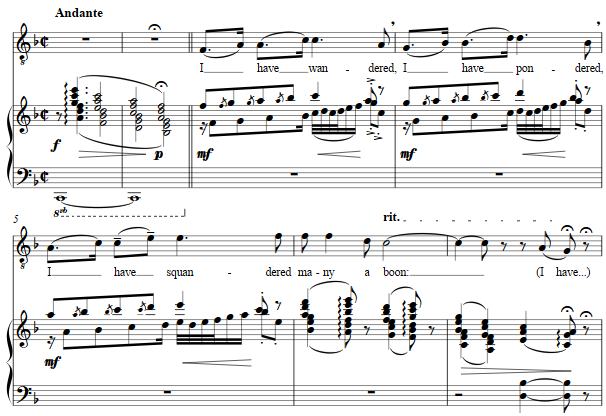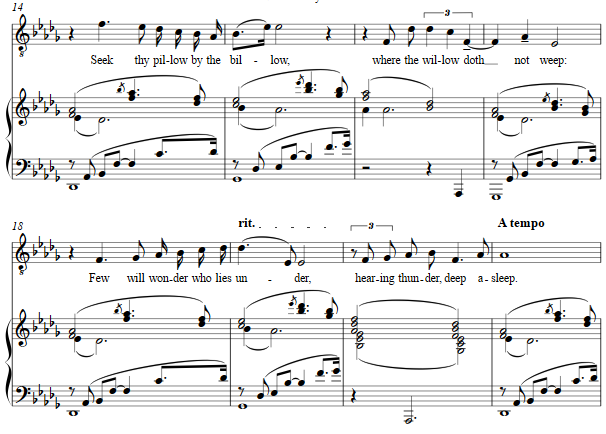Music and Texts of GARY BACHLUND
Vocal Music | Piano | Organ | Chamber Music | Orchestral | Articles and Commentary | Poems and Stories | Miscellany | FAQs
From a New Theory of Parallels - (2017)
Charles Dodgson
for medium voice and piano
I have wandered,
I have pondered,
I have squandered
Many a boon:
In the sadness,
In the gladness,
In the madness
Of the moon.
Seek thy pillow
By the billow,
Where the willow
Doth not weep:
Few will wonder
Who lies under,
Hearing thunder,
Fast asleep.
Life, what is it but a dream?2 pages, circa 2' 00"
Additional research into the life and work of Charles Lutwidge Dodgson (1832-1898) continues, with more verse becoming known. The text for this song setting is found in "Rare, Uncollected & Unpublished Verse of Lewis Carroll," collected and annotated by August A. Imholtz, Jr. & Edward Wakeling, Lewis Carroll Society of North America, 2017, from the Urtext of Dodgson, "Part I - A New Theory of Parallels," in "Curiosa Mathematica, Macmillan and Company, 1890.
The text is in Appendix IV to the work on mathematics, in which Dodgson writes of his words, "They were written 'for music,' for which purpose, I imagine, the amount of sense required is not excessive." After the poem itself, he adds: "Poetry like this speaks for itself: vain were it to hope that any poor words of mine serve to illuminate, or even elucidate, its almost ethereal beauty!" The song setting is of two distinct parts, the first with dotted rhythm and rhythmic punctuation in the manner of a self-accusation as follows:
The second "solves" the first, as the text moves from a first-person stance to third, with a possible double reading therein. For this, a last and well-known question is added to the song setting, as found in his beloved Looking Glass. "Life, what is it but a dream?"
For other setting of the texts of Charles Dodgson -- Lewis Carroll -- click here
.
The score is available as a free PDF download, though any major commercial performance or recording of the work is prohibited without prior arrangement with the composer. Click on the graphic below for this piano-vocal score.
From a New Theory of Parallels


